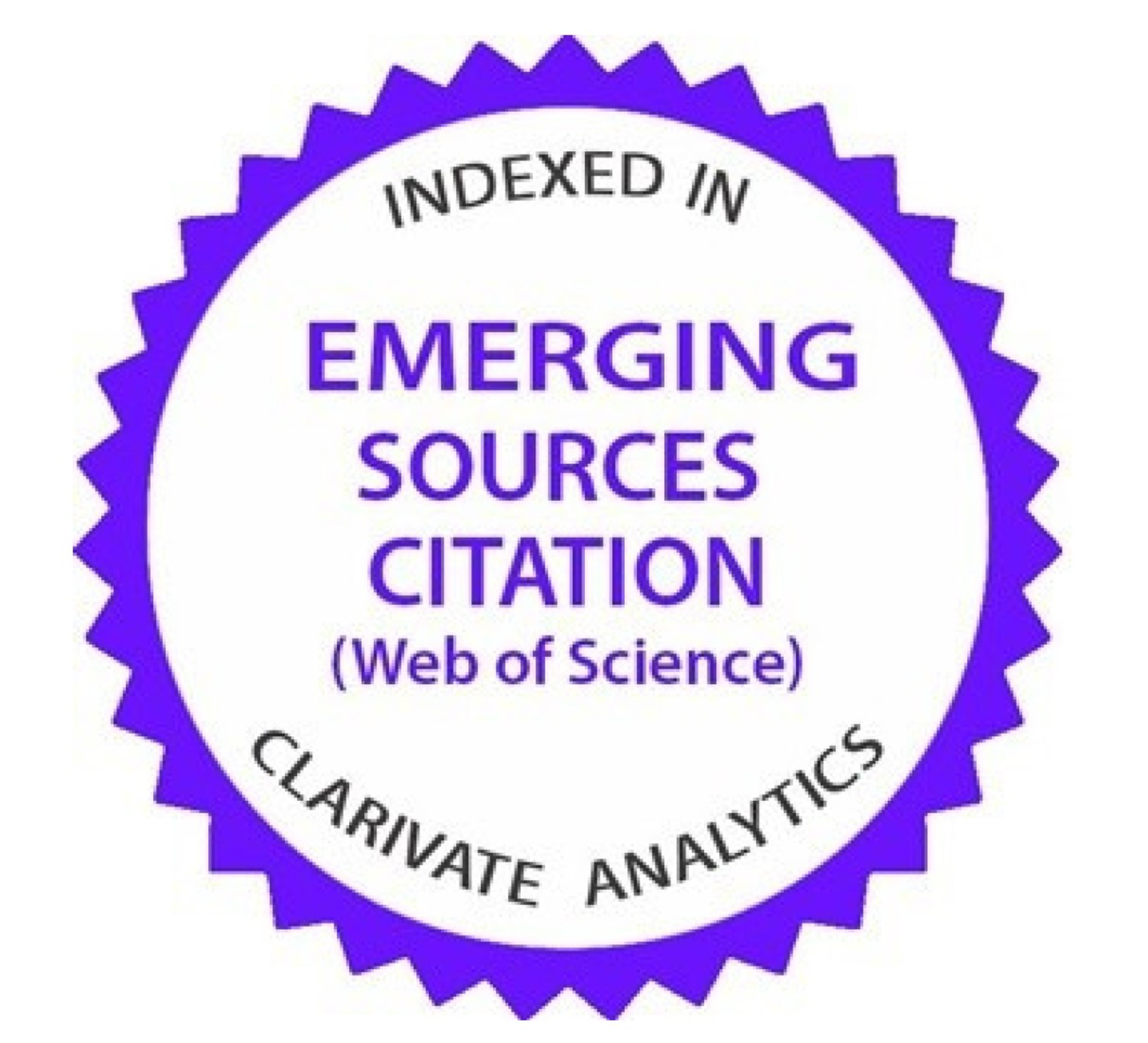Tracing the strategic roots of Confucianism in China’s contemporary foreign policy
Downloads
As China asserts its global role, principles such as harmony (hé), benevolence (rén), and the doctrine of the mean (zhōng yōng) increasingly influence its diplomatic behavior. These values form the basis of what this study calls a “Defensive-Moderate Confucian Approach,” integrating strategic culture, constructivism, defensive realism, and soft power. This article examines how Confucian strategic values shape China’s foreign policy, particularly under Xi Jinping’s leadership. Through case studies of China’s relations with the United States and India, the paper highlights how Confucian ethics guide both cooperative projects like the Belt and Road Initiative and calibrated responses in territorial disputes. While contradictions between moral ideals and strategic interests occasionally emerge, Confucianism remains a key reference in shaping China’s pursuit of order and stability. The article argues that China’s international conduct cannot be fully explained by materialist frameworks alone. Instead, Confucian thought offers a culturally grounded lens for interpreting its foreign policy choices. By doing so, the study contributes to broader discussions in International Relations and Chinese Studies on the enduring impact of historical values in contemporary global politics.
Alagappa M (2010) Strengthening international studies in India. International Studies 46 (1-2):7-35. https://doi.org/10.1177/002088171004600203.
Aldora C (2024) Dualism in China’s strategic culture implementation through ‘Confucian-Pacifism’ and ‘Cultural Realism’ in tackling border problems. JUSS (Jurnal Sosial Soedirman) [S.l.] 7 (2):238-257. https://doi.org/10.20884/juss.v7i2.13056.
Amalia AI (2021) Repositioning culture in international relations: Confucianism as geopolitical instrument. Jurnal Transformasi Global 8 (2):120-127.
An N, Sharp J, & Shaw I (2021) Towards a Confucian geopolitics. Dialogues in Human Geography 11 (2):218-235. https://doi.org/10.1177/2043820620951354.
Basrur RM (2019) The BRI and India’s grand strategy. Strategic Analysis 43: 187-198. https://doi.org/10.1080/09700161.2019.1598082.
Bharti MS (2024a) China’s Belt and Road Initiatives (BRI) in South Asia and its policy challenges to India in the region. South Asian Survey 30 (2):154-174. https://doi.org/10.1177/09715231231218827.
Bharti MS (2024b) China –India border disputes: An analytical analysis of Doklam standoff to Tawang clash. Asian Journal of Political Science 1-21. https://doi.org/10.1080/02185377.2024.2429084.
Burgess SF (2016) Rising bipolarity in the South China Sea: The American rebalance to Asia and China’s expansion. Contemporary Security Policy 37 (1):111-143. https://doi.org/10.1080/13523260. 2016.1149968.
Callahan WA (2008) Chinese visions of world order: Post-hegemonic or a New Hegemony? International Studies Review 10 (4):749-761. https://doi.org/10.1111/j.1468-2486.2008.00830.x.
Carlson AR (2011) Moving beyond sovereignty? A brief consideration of recent changes in China’s approach to international order and the emergence of the Tianxia concept. Journal of Contemporary China 20 (68):89-102. https://doi.org/10.1080/10670564.2011.520848.
Chaulia S (2021) In spite of the spite: An Indian view of China and India in BRICS. Global policy 12 (4):519-523. https://doi.org/10.1111/1758-5899.13009.
Chen X-Y, Lin T-H, & Chen C-JJ (2025) Deterrence, assurance, and countermeasures: Insights from Pelosi’s Taiwan visit and Chinese military exercises. Asian Survey 65 (1):131-159. https://doi.org/10.1525/as.2024.2408270.
Cheng-Chwee K (2017) Explaining the contradiction in China’s South China Sea policy: Structural drivers and domestic imperatives. China: An International Journal 15 (1):163-186. https://doi.org/10.1353/chn.2017.0009.
Chiebuka AQ, Janet OO, & Oluchi OC (2025) The Belt and Road Initiative: China’s vision for global connectivity and soft power influence. Asian Journal of Education and Social Studies 51 (1):262-272. https://doi.org/10.9734/ajess/2025/v51i11745.
Cooper AF & Farooq AB (2016) The role of China and India in the G20 and BRICS: Commonalities or competitive behaviour? Journal of Current Chinese Affairs 45 (3):73-106. https://doi.org/10.1177/186810261604500303.
Dingli S (2010) Building China-India reconciliation. Asian Perspective 34 (4):139-163. https://doi.org/10.1353/apr.2010.0009.
Fang S (2024) The Belt and Road Initiative: Geopolitical implications for South Asia. In: Proceedings of ICGPSH 2024 Workshop: Industry 5 and Society 5 – A Study from The Global Politics and Socio-Humanity Perspective. Lecture Notes in Education Psychology and Public Media 71: 34-39. https://doi.org/10.54254/2753-7048/71/2025LC0006.
Farooq M (2023) US’ Taiwan strategy: An instrument to contain China. Margalla Papers 27 (1):96-108.
Farwa U (2018) Belt and Road Initiative and China’s strategic culture. Strategic Studies 38 (3):40-56. https://doi.org/10.53532/ss.038.03.00143.
Feng H (2015) Foreign Policy Analysis in China. Colorado: Lynne Rienner Publishers, Inc.
Feng H & He K (2021) A dynamic strategic culture model and China’s behavior in the South China Sea. Cambridge Review of International Affairs 34 (4):510-529. https://doi.org/10.1080/09557571.2019.1642301.
Feng H (2009) A dragon on defense: Explaining China’s strategic culture. In: Johnson JL, Kartchner KM, & Larsen JA (ed) Strategic Culture and Weapons of Mass Destruction. Initiatives in Strategic Studies: Issues and Policies. New York: Palgrave Macmillan. https://doi.org/10.1057/9780230618305_11.
Fravel MT & Miura K (2020) Stormy seas: The South China Sea in US-China relations. MIT Political Science Department Research Paper, Forthcoming. http://dx.doi.org/10.2139/ssrn.3680649.
Fravel MT (2020) Stability in a secondary strategic direction: China and the border dispute with India after 1962. In: Bajpai K, Ho S, & Miller MC (ed). Routledge handbook of China–India relations (1st ed). London: Routledge.
Fravel MT (2011) China’s strategy in the South China Sea. Contemporary Southeast Asia: A Journal of International and Strategic Affairs 33 (3):292-319. https://www.jstor.org/stable/41446232.
Freeman CP (2018) China’s ‘regionalism foreign policy’ and China-India relations in South Asia. Contemporary Politics 24 (1):81-97. https://doi.org/10.1080/13569775.2017.1408168.
Futák-Campbell B & Wang J (2021) Is there such a thing as a Confucianist Chinese foreign policy? A case study of the Belt and Road Initiative. In Futák-Campbell B (ed). Globalizing Regionalism and International Relations (1st ed). Bristol: Bristol University Press. 153-180. https://doi.org/10.2307/j.ctv1nh3md7.13.
Ghosh N, Pal P, Chakraborty J, & Ray R (2018) China–India relations in economic forums: Examining the regional comprehensive economic partnership. Occasional paper. Observer Research Foundation 50.
Gilboy GJ & Heginbotham E (2012) Foreign Policy, Use of Force, and Border Settlements. In Chinese and Indian Strategic Behavior: Growing Power and Alarm. Cambridge: Cambridge University Press. 40-93.
Gonzalez-Vicente R (2021) Why a critical geopolitics cannot be Confucian. Dialogues in Human Geography 11 (2):248-252. https://doi.org/10.1177/20438206211017769.
Hall I (2020) China in India’s strategic thought. In: Routledge Handbook of China–India Relations (1st ed). London: Routledge. 151-166.
Ho BT (2016) About Face—the relational dimension in Chinese IR discourse. Journal of Contemporary China 25 (98):307-320. https://doi.org/10.1080/10670564.2015.1075715.
Ji M (2015) Expectations and realities: Managing the risks of the “Belt and Road” Initiative. China Quarterly of International Strategic Studies 1 (3):497-522. https://doi.org/10.1142/S2377740015500244.
Johnston AI (1995) Cultural Realism: Strategic Culture and Grand Strategy in Chinese History (Vol. 178). New Jersey: Princeton University Press. https://doi.org/10.2307/j.ctvzxx9p0.
Jones L & Zeng J (2019) Understanding China’s ‘Belt and Road Initiative’: beyond ‘grand strategy’ to a state transformation analysis. Third World Quarterly 40 (8):1415-1439. https://doi.org/10.1080/01436597.2018.1559046.
Khan U, Wang H, Cui Z, Begum A, Mohamed A, & Han H (2022) The philosophical thought of Confucius and Mencius, and the concept of the community of a shared future for mankind. Sustainability 14 (16):9854. https://doi.org/10.3390/su14169854.
Li X (2022) The role of Confucian ethics in the foreign policy directions of modern China, Administrative Consulting 5: 132-140. https://doi.org/10.22394/1726-1139-2022-5-132-140.
Liu TTT & Tsai TC (2014) Swords into ploughshares? China’s soft power strategy in Southeast Asia and its challenges. Revista Brasileira de Política Internacional 57 (special edition):28-48. https://doi.org/10.1590/0034-7329201400203.
Modestus Q (2023) Yi is a guiding principle of China’s foreign policy in Africa. Journal of Developing Societies 39 (2):218-235. https://doi.org/10.1177/0169796X231165144.
Nathan AJ & Zhang B (2022) A shared future for mankind: Rhetoric and reality in Chinese foreign policy under Xi Jinping. Journal of Contemporary China 31 (133):57-71. https://doi.org/10.1080/10670564.2021.1926091.
Pan P (2022) The Chinese state and soft power. BCP Social Sciences & Humanities 20: 507-516. https://doi.org/10.54691/bcpssh.v20i.2366.
Pan S & Lo JT (2017) Re-conceptualizing China’s rise as a global power: a neo-tributary perspective. The Pacific Review 30 (1):1-25. https://doi.org/10.1080/09512748.2015.1075578.
Papageorgiou M, Can M, & Vieira A (2024) China as a threat and balancing behavior in the realm of emerging technologies. Chinese Political Science Review 9: 441-482. https://doi.org/10.1007/s41111-024-00248-0.
Pardesi MS (2021) Explaining the asymmetry in the Sino-Indian strategic rivalry. Australian Journal of International Affairs 75 (3):341-365. https://doi.org/10.1080/10357718.2021.1893267.
Puranen M (2019) All under heaven as one family: Tianxiaist ideology and the emerging Chinese great power identity. Journal of China and International Relations 7 (1):44-61. https://doi.org/10.5278/jcir.v7i1.6637.
Rosyidin M (2019) The Dao of foreign policy: Understanding China’s dual strategy in the South China Sea. Contemporary Security Policy 40 (2):214-238. https://doi.org/10.1080/13523260.2019.1565374.
Sachdeva G (2018) Indian perceptions of the Chinese Belt and Road Initiative. International Studies 55 (4):285-296. https://doi.org/10.1177/0020881718807359.
Šimalčík M (2020) China and the South China Sea conflict: A case for Confucian strategic culture? The Journal of Indian and Asian Studies 1 (1):2050002. https://doi.org/10.1142/S2717541320500023.
Tan W & Soong JJ (2024) Opportunities and Challenges of China’s Economic and Political Development under the Third Term of Xi Leadership: A Viewpoint of India. The Chinese Economy 58 (1):35-48. https://doi.org/10.1080/10971475.2024.2373645.
Uddin MJ & Lau R.-S (2023) Rules-based international order and US Indo-Pacific strategy: what does it mean for China’s BRI? Journal of Liberty and International Affairs 9 (1):386-400. https://doi.org/10.47305/JLIA2391392u.
Uemura T (2013) Understanding Sino-Japanese relations: Proposing a constructivist approach in Chinese studies. Journal of Contemporary East Asia Studies 2 (1):95-127. https://doi.org/10.1080/24761028.2013.11869059.
Wang W (2024) Reconciling China’s maritime discourses of nationalism and international engagement with left Confucian logic. Humanities and Social Sciences Communications 11 (275). https://doi.org/10.1057/s41599-024-02774-3.
Wang Y (2010) China’s response to the unipolar world: The strategic logic of peaceful development. Journal of Asian and African Studies 45 (5):554-567. https://doi.org/10.1177/0021909610373898.
Wu B & Devine N (2018) Self-cultivation and the legitimation of power: Governing China through education. Educational Philosophy and Theory, 50 (13):1192-1202. https://doi.org/10.1080/00131857.2017.1395737.
Xiao S (2024) Navigating contradictions in Chinese diplomacy: The dual narratives of “peaceful rise” and “class struggle” in soft power discourse. In: Proceedings of the 2nd International Conference on Social Psychology and Humanity Studies. Lecture Notes in Education Psychology and Public Media 40: 38-45. https://doi.org/10.54254/2753-7048/40/20240694.
Xue Y (2023) China as a great power: Reconsidering face culture in Chinese foreign policy. International Journal 78 (4):521-538. https://doi.org/10.1177/00207020231213601.
Yıldırımçakar E (2024) China’s ambition to balance power within the framework of soft and normative power concepts. Current Research in Social Sciences 10 (2):194-210. https://doi.org/10.30613/curesosc.1498132.
Yu Y (2024) Holistic pragmatism: The Chinese approach on international relations. Stosunki Międzynarodowe–International Relations 4 (9). https://doi.org/10.12688/stomiedintrelat.17810.1.
Yuan J (2016) Sino–Indian economic ties since 1988: Progress, problems, and prospects for future development. Journal of Current Chinese Affairs 45 (3):31-71. https://doi.org/10.1177/186810261604500302.
Zhang B (2023) Hoping for the best, preparing for the worst: China’s varied responses to US strategic competition. Journal of Contemporary China 33 (146):352-371. https://doi.org/10.1080/10670564.2023.2201170.
Zhang T (2002) Chinese strategic culture: Traditional and present features. Comparative Strategy 21 (2):73-90. https://doi.org/10.1080/01495930290043056.
Zhao M (2021) The Belt and Road Initiative and China–US strategic competition. China International Strategy Review 3: 248-260. https://doi.org/10.1007/s42533-021-00087-7.
Zhao Q (2018) The influence of Confucianism on Chinese politics and foreign policy. Asian Education and Development Studies 7 (4):321-328. https://doi.org/10.1108/AEDS-03-2018-0057.
Zhou, W., & Esteban, M. (2018). Beyond balancing: China’s approach towards the Belt and Road Initiative. Journal of Contemporary China 27 (112):487-501. https://doi.org/10.1080/10670564.2018.1433476.
Zhao L (2023) China’s engagements in the reconstruction of international economic rules: Practical contributions. In: Modern China and international rules: Reconstruction and innovation. Singapore: Springer Nature Singapore. 293-318.
Zreik M (2025) Navigating new waters: China’s strategic responses to the Indo-Pacific economic framework for prosperity. Asian Journal of Political Science 33 (1):107-121. https://doi.org/10.1080/02185377.2024.2399064.

This work is licensed under a Creative Commons Attribution-NonCommercial-ShareAlike 4.0 International License.
Copyright of this journal is possession of Editorial Board and Journal Manager, by the knowledge of the author, while the moral right of the publication belongs to the author.
The formal legal aspect of journal publication accessibility refers to Creative Commons Attribution-NonCommercial-ShareAlike (CC BY-NC-SA), implies that publication can be used for non-commercial purposes in its original form (cannot be modified).
Every publication (printed/electronic) are open access for educational purposes, research, and library. Other than the aims mentioned above, the editorial board is not responsible for copyright violation.
















